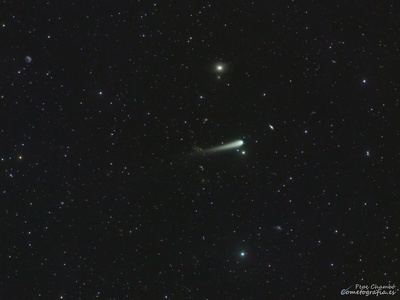Is this comet doomed?
If true, this is disappointing news. Discovered in early 2023, the comet appears to be heading for a magnificent close encounter with the sun later this year, perhaps becoming as bright as Venus in October 2024. Instead, it could fall apart before it has a chance to become a naked-eye object.
Sekanina's arguments are threefold: First, the comet has failed to brighten as it approaches the sun. Second, the comet's orbit seems to be affected by a "non-gravitational acceleration." This could happen if, say, inner jets are pushing apart a disintegrating nucleus. Third, the comet's dust tail has an unusually narrow, teardrop shape with a peculiar orientation.
Together, these suggest a crumbling comet "in which increasing numbers of fractured refractory solids stay assembled in dark, porous blobs of exotic shape, becoming undetectable as they gradually disperse in space," says Sekanina.
"That is a fascinating paper," says Nick James, director of the Comet Section of the British Astronomical Association. "Sekanina is very well respected in the field, so it carries a lot of weight. To use 'inevitable' in any prediction about a comet may be unwise! But it is definitely a testable theory and another good reason to observe this comet at every opportunity." In fact, James isn't convinced. In an independent data set, he finds no evidence of non-gravitational accelerations. "This doesn't look like a comet that is fragmenting to me," he says. We'll soon find out. The comet is brighter than 10th magnitude, well within range of mid-sized backyard telescopes, which means amateur astronomers can monitor the potential break-up. Point your optics here.
